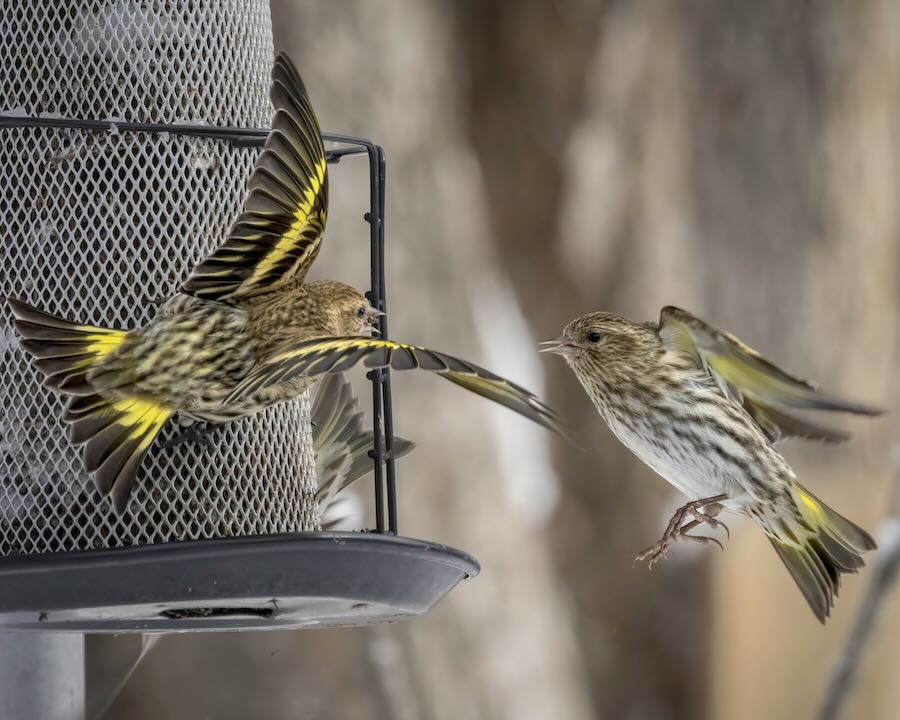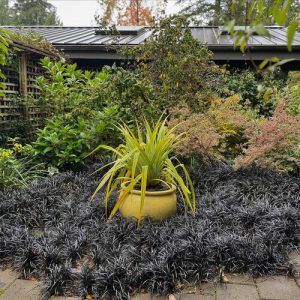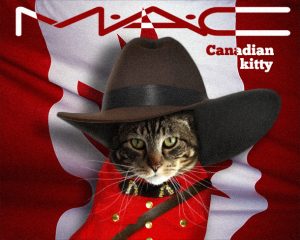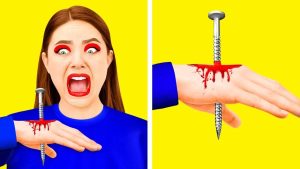
WATCHING BIRDS lifts my spirits, as it has for decades, and who couldn’t use their spirits lifted right about now? But there’s another much bigger potential benefit, which is that sharing my sightings helps scientists understand what’s going on with bird populations in a changing world.
One of my favorite citizen-science efforts, a global project called The Great Backyard Bird Count, is coming up Feb. 16-19, and its project manager is here today with tips on using the latest technology like the Merlin app, along with our old-school observational powers to improve our bird ID skills.
Becca Rodomsky-Bish manages the annual Great Backyard Bird Count, a collaboration founded in 1998 between Cornell Lab of Ornithology, where she works, the National Audubon Society and Birds Canada. Becca is also a passionate habitat-style gardener herself. (Photo above of pine siskins by Julie Blondeau/Macaulay Library.)
Read along as you listen to the Feb. 12, 2024 edition of my public-radio show and podcast using the player below. You can subscribe to all future editions on Apple Podcasts (iTunes) or Spotify (and browse my archive of podcasts here).
counting birds, with becca rodomsky-bish
Margaret Roach: Hi, Becca. How are you?
Becca Rodomsky-Bish: Hi. I am great, Margaret. I am a big fan of all of your work around gardening, so it’s an honor to be here.
Margaret: Well, we’ve collaborated on things before. You’ve always taught me—you and your colleagues over the years have taught me so much, and I’ve put in a plug for the Lab of Ornithology. I’ve been a member for a million years because I’m a million years old, and I’ve just learned so much from your resources there and from participating, which we’re going to encourage everybody to take some time to do.
So before we get started in the meat of the conversation, just let’s briefly set the scene. It’s Feb. 16-19, the Great Backyard Bird Count. This is a global event. How many people do this?
Becca: Yeah. Well, what’s amazing about this event is I always think every year we’ve hit our max and then every year we get more people. It’s so inspiring. Last year we reached about a half a million people, which was record-breaking. So the love of birds and people’s interest and willingness to get outside and look at what’s around them seems to be growing, which is wonderful news.
Margaret: I believe it’s Birdcount.org is the main URL for the website. Is that correct? Do I have that right?
Becca: That is correct.
Margaret: Birdcount dot org. So the word “backyard” is in the title Great Backyard Bird Count. But that doesn’t mean I have to just watch in my backyard or does it? What’s the deal?
Becca: You’re right. That’s sort of a historical creation, and we’ve debated whether to change it, but we’ve sort of symbolically kind of thought of the world as our backyard, right? And when we started this project in 1998, as you referenced, we really were focused on backyard birdwatchers, specifically their feeders, and it was a little bit of a test trial run. We focused mostly in the United States, where birdfeeding is incredibly popular, and it was actually sort of the precursor to eBird. They were curious if people would actually even enter their sightings in their backyards, and people did. So eBird thought, well, what if we made a tool that you could ID birds anywhere, no matter where you are or where they are? And that was sort of the impetus.
So it’s sort of a historical name, but you are 100% correct. We are not limited to our backyards. In February in the Northeast like you and I both are, sometimes it’s sort of nice and cozy to just stay in the house and watch our birds from the inside. But we are not limited to that now, especially since it’s global. Go out: your street, your local parks, your schools, your businesses. Birds are everywhere. So we are interested in hearing about your birds no matter where they are.
Margaret: And you’re going to have some webinars, various sort of preparatory webinars that people can learn more in advance of the event. So that’s another way to get ready.
And you don’t have to do all four days, right? I mean it’s not like you have to sit for four straight days during daylight hours and stare at birds. That’s not the idea. What’s the minimum contribution, so to speak?

And that’s a really intentional change compared to some of the other bird counts because we really want GBBC to be something that people, no matter where they’re at in their journey of watching birds or connecting to the natural world, feel like they can make a contribution. So we do try to keep the entry level relatively reasonable. That said, we do have people that do what you said, Margaret, and they just sit, and watch all weekend [laughter]. So it runs the gamut in terms of what we get in terms of submissions. [Above, a dark-eyed junco by Rowan Keunen/Macaulay Library.]
Margaret: Yes. So I wanted to talk about some of the tools and you mentioned Merlin. I started counting birds and submitting my observations when it was still on paper a long time ago, because I’m 200 years old [laughter], and now it’s all digital and so forth. And it’s incredible. I mean the support, so to speak, the tools we can have literally in our hand to help us to become better birders. I mean, I don’t think Merlin’s even that old, maybe a decade or so, and things like the Sound ID function I think is only maybe what, 2021 it came out or something.
Becca: A couple of years. Yeah.
Margaret: Yeah. So tell us, first of all, I guess we should be eBird members. If we’re going to do this, we register an eBird. How does it work? What should we be doing to be ready to utilize some of these new tools?
Becca: Yeah, that’s a really good point and you make me realize very quickly or remind me that it can be a little confusing because you get lots of choices in terms of tools. I like to try to tell people the GBBC is the event, and the tools that they can use to participate are Merlin and eBird. So you don’t actually have to register ahead of time. Some of your listeners may be project feeder watch participants, maybe they’re Lab of Ornithology members. And if they are, they probably already have a username and a password. So that is what you can use. If you’ve participated in the past, use the same username and password so that all your data goes into the same account for you so you can look back at it. And you don’t need to do it ahead of time.
I do recommend that people, if they’re going to use the tools for the first time, make sure you download them ahead of the account weekend so that if you are having issues, you can reach out to us maybe before things get really, really busy. But download the tools ahead of time. If you don’t have an account with any of the lab projects, you’ve never taken a Bird Academy course, you’ve never entered data, you never used Merlin, go ahead and set up your account ahead of time, which the tools, whether you’re using eBird or Merlin, it’ll prompt you to do that. So that’s going to be kind of an automatic to use the tool. And create those accounts and make sure if you’re using a unique password, you remember it or write it down somewhere [laughter]. If you get logged out, you’ll need it again.
And then just get on your tool and tell us what you hear or see over the weekend. Some people prefer to use eBird, because the big thing I say is if you’re brand new to birds, try Merlin at least a couple times. You’re going to ID birds one at a time, either through sound or through walking through a workflow. But if you really know your birds, if you know species, if you have feeders and you can quickly identify and count them, you can create a checklist in eBird. And it can be a little bit of a learning curve to learn the tool, but if you really are confident with your bird species, use eBird. Otherwise, I do recommend beginners to use that Merlin tool for the first couple of entries.
Margaret: And I’m sort of like one of those half-and-half people. I’ll have a piece of paper and I’ll write down 18 mourning doves or whatever. I’ll keep writing down how many of them, maximum, I see of something is at any given time of day and all my species, and then I’ll put it in my eBird online later. I may not do it right in real time, into the eBird, or you can do that. So whatever you’re more comfortable with, the point is to engage and to do it, not to do it however you can, I think.
Becca: Exactly. And you made that really good point. It’s the maximum number that you see at any given time. So many of us have chickadees and titmice and these sort of quick back-and-forth feeders, but if you never see two chickadees at once or if you never see two titmouse at once, you would just use one as your total.
And I think your point about tallying is really important. I have a child and it’s much easier to sit down with him with paper and pencil and do that in front of us and then go back and we enter the data together. So it’s definitely a stylistic thing, and I recommend people to just go with what they’re most comfortable with.
Margaret: So with Merlin, what got me using it was the Sound ID, when Sound ID was introduced, because it’s like someone, a birding friend told me about it and I was like, “Really?” Because I’m in a wood, like a state forest, state park kind of an area surrounds me, lots of voices in the breeding season especially, and I don’t necessarily see all the birds. So it was interesting for me to utilize that, but I’m not fully using Merlin. And you just said there’s sort of a workflow thing. It also can help us ID either from a photo or by asking us, I think it’s three questions, like how big’s the bird, what color is it, and what’s it doing? There’s a list of things that it could be doing like is it on a wire or is it feeding it a feeder or I think those are the types of things, and then it narrows it kind of for you?
Becca: Yeah, absolutely. Merlin, and you kind of referenced this early, Merlin only really exists because of eBird. These are tools that have been feeding each other or do feed each other. In order to create Merlin, we had to have machine learning. We had to have enough bird sounds: calls and songs. We had to have enough pictures of birds that had their main attributes marked and decoded. So that’s kind of why Merlin’s taken a while to evolve, is because we had to really activate a global bird audience to be able to make it happen.
But yeah, Merlin has three major ways that you can identify birds using this very complicated machine learning. The one you referenced is the most important feature right now, which is Sound ID. And what’s really fun about that is that there’s sort of this immediacy of information that people get about their local place that they’re in, and that’s powerful.
So you literally open up Merlin, you’ll be prompted with sort of the three ways you can use the tool, Sound ID’s at the top, you would hit Sound ID and then you would hit “record,” literally. And Margaret’s used it, you just hold it out as close to the birds that you’re recording as possible. And you’ll be surprised that not only the bird that you think you’re looking for or ID-ing, but many others that may be in the backgrounds in the treetop and shrubs also list, which is what’s so fun. It’s this discovery tool that you realize, “Wow, I’ve never seen that bird.” But according to Merlin, it is picking up either its call or its song and it’s just magical. It’s magical. I am a lover of birds, but every time I use particularly the Sound ID feature, it really does literally blow my mind how amazing it works.
Margaret: And so then the other two ways are, again, you can do it from a photo if you happen to grab a photo, or you can answer those three questions about the characteristics of the bird and it can help narrow your focus.
Becca: Yeah. And one of the reasons I like the step-by-step, I use that a lot. I highly recommend the step-by-step, especially if you’re traveling. And it kind of goes to what you and I talked a little bit about, Margaret, is that the step-by-step actually makes you pay attention slightly more closely to the birds because it’s going to ask you about the birds.
Sound ID is just sort of this passive pickup. But the step-by-step really asks you how big is the bird? What colors are sort of the three dominant ones; you can pick up to three dominant colors. And what is the bird doing? So then you start to connect to maybe lifestyle and behaviors and habitat preferences and so forth. So I like the step-by-step ID. I actually use it probably just as much as the Sound ID, and I use it a lot when I travel, because if I’m in a new area and I maybe just get a quick glimpse of a bird and it’s not singing or it’s not calling, then I can use some of those quick observations that I made and walk through the workflow to try and narrow down what I’m seeing.

And you probably—well, certainly because it’s your area of expertise—know how to look a lot more carefully than I do. But I have learned over the years certain things, like for instance, the biggest mistake I made for many years was I see a bird, I go, “I don’t know what that is,” and I’d grab the field guide and then bury my nose in the field guide [laughter], and no, no, no, Margaret, you should be looking at the bird and soaking in as much visual data, so to speak, as you can while you have the opportunity. Because the minute you look up from the field guide, he or she is gone, and you don’t have another chance. So things like that.
But what do you, Becca—you see a bird that’s not a chickadee or a titmouse, and what do you want to take in right away? What are the attributes of the bird that you want to take in right away to help you toward an ID? [Above, a winter wren by James Davis/Macaulay Library.]
Becca: Yeah, that’s a really good question and I appreciate how you want to keep those natural observation skills that we have alive and well. Size and shape are sort of the two that come to me quickly when I’m looking at a bird. And when I say size and shape, it’s not just the bird itself, but I kind of try to focus in on the beak, in particular, can be very informative. So I think about size and shape of bird and beak. And even tail depending on the species that I’m looking at, length of tail can be telling.
And I also look for unique features and coloration. And the two places, there’s kind of three, but the two main ones I always go to are the eye and the wings. A lot of different birds, especially those tricky birds like warblers and vireos and so forth, they have sometimes eye rings or not eye rings.
So if I see a marking or a black band or a not-black band, the eye marks help me, the wing bands help me. And then I would say the third for me is tail coloration or tail pigmentations I look for, too. So those are kind of the quick looks. And then what I also try to do as I’m soaking all of those features in, I try to quickly see if I can put the bird into a specific family. So am I looking at a sparrow? Am I looking at a warbler? Am I looking at a cardinal? Am I looking at a mockingbird-thrasher-catbird family? So I try to lump the bird in my brain as I’m taking in sort of those size, shape and color questions.
Margaret: Yeah, it’s interesting, like you were saying, I mean sparrows, that can just be like, oh my goodness, that can be really confusing, because a lot of places have multiple species of sparrows that you might encounter. And that’s where you don’t want to look away. You want to really look, and I live alone so have the privilege that I can talk out loud to myself [laughter]. So I’ll say when I see I’m like “spot on chest, spot on breast,” or I can say “striped head gray and tan,” or I can say aloud what I’m seeing so that hopefully, and I could scribble it down, but again, I don’t want to look away. I can try to remind myself and is the tail is squared off or notched? Is it long or short? You know what I mean?
I’m trying to find little things, but I tend to look at the heads and the tails and like you say, obviously the coloration and the size first and foremost. But yeah, there’s certain birds, I mean people ask all the time, was it a hairy or downy woodpecker, was it a purple finch or a house finch? Which sparrow was it? Was it a crow or a raven? Speaking of where the beak, I think the raven, you look at its face even if otherwise you’re not seeing everything else, I mean that’s some beak going on there [laughter].
Becca: Yeah, definitely.

You talked about the life histories and things like that, because I mean go, if it’s a new bird to me, I go to the allaboutbirds.org, the sort of species profiles on the Lab of Ornithology, the Cornell site, and I’ll look up like, does it migrate, and where does it live, and where does it nest, and what does it eat and all these different things. And it’s how many broods does it have and all these kinds of amazing things that, because to me it’s not just like, “Oh, I saw this bird, I can check it off my list.” I want to know a little bit about this beautiful animal. That’s my thing is who is it, right? [Above, pileated woodpecker by Steve Luke/Macaulay Library.]
Becca: Absolutely. Yeah, each of these birds have a story, and they’re really fun stories, too. And I feel like it’s a privilege that we have as much information as we have that we can begin to understand these birds on a deeper level. So I’m like you too. I will list and I have listed, but I bird for something that’s a little more about the bird itself and the connection that I feel. And sort of, it’s almost like unlocking a mystery, right? Like this little creature shares this habitat with me. What does it do? Where does it go? How many babies does it have?
Margaret: Yes.
Becca: Really the questions are quite endless. And a plug for, that’s another plug for Merlin. I want to make sure that people definitely download bird packs with Merlin for the areas that they are birding in. There’s one that’s specific to the Northeast, which is a smaller data set if you have limited space on your phone. Or you can get the pack for the whole United States and Canada, which allows you to see some of the more rare or migratory or unusual birds in a broader area.
But when you download the pack, that’s where you’re going to get the field guide stuff. So I definitely think field guides that I hold in my hand, they’re valuable, I use them, but you can also get access to a lot of that field guide information right in Merlin, too, as long as you’ve downloaded the pack for your area. But yeah, I encourage people, and that’s one of the reasons why birds are so popular, is because they really can be sort of this gateway to a deeper knowledge and connection to what’s living around us and co-existing with us, really.
Margaret: Yeah. And sure enough, what you saw, like the behavior or whatever, you read about it and you’re like, “Oh, right, it does that. I saw that.” Do you know what I mean? It just connects all the dots and that’s a characteristic behavior; it’s fascinating. And sure enough, you see the bird in the type of habitat that it’s supposed to be in. It’s just so great to study them a little bit after seeing someone new.
So as I said in the beginning, kind of a habitat-style gardener because of your love of birds and me similar. Do you have water in the winter in your garden? Because that’s where the action is. For me, I keep, in one of my water gardens, a hole in the ice, so to speak. And boy, that is the most popular place.
Becca: Nice.
Margaret: Water. Do you have water that’s unfrozen or in your garden?
Becca: Yeah, it is a really important feature to have in this area. I will admit I do have water baths that I use in the warmer months, and I have a spot in my front yard where my husband and I are in the middle of a more elaborate water feature that we’re building by hand. So I will have a water feature year round that moves and we keep warm, but at the moment I only offer water in the warmer months. But I love that you keep water access. And yeah, the other thing is even in the warmer months, you will get birds at that water feature that won’t come to your feeders or-
Margaret: Oh, absolutely. Absolutely. I think water, I always say, people say, well, what’s the most powerful bird plant you ever planted? And I’m like, water [laughter].
Becca: Water. That’s great. What’s your favorite bird you’ve seen at your water? I’m just curious.
Margaret: Oh, who the most…? Well, I had a non-bird, last year I had a mink swimming in one of the ponds in the winter. No, it’s nuts. It’s everyone, and the bobcat comes and drinks. Everybody drinks at the water. Other animals, mammals and so forth as well. No, it’s crazy.
So some of the winter finches when there have been irruption years, some of the winter finches. Pine grosbeaks, because I had a whole flock of them a number of years ago, and they loved the water. They would sit on the little deicer, this bobbing sort of thing. They’d sit on it and they, it’s just hysterical. So yeah, lots of fun uses of the water.
And I wanted to ask you about, what was I going to ask you about [laughter]? Oh, the leave the leaves. Are you getting a lot of questions already from people who are, especially a lot of areas have had sort of a mildish winter and a lot of thawing and so forth. I’m already getting a lot of questions in early February about when can I clean up the, I did the leave the leaves to encourage overwintering places for so many beneficial organisms and when can I clean up? Can I start removing stuff? Can I start doing cutbacks? In your garden how do you sort of handle that? What’s your sort of timing or guideline?

Margaret: Yes.
Becca: Still so much foraging potential out there. Every time I walk outside to my gardens, there’s a flock of sparrows or finches that fly up. They’re in there and they’re still using it. So I tend to not clean up my garden until generally it’s more like April really. I mean we’ll see about this year, but when I feel like the days are consistently warm, around 50 degrees, and there’s a couple of consecutive ones.
And I generally clean up in a way that I’m thinking about my pollinator population. So I don’t tend to cut my hollow stems down to the ground. I tend to leave them a foot to 2 feet really actually standing, because that provides that hollow chamber for our chamber bees and so forth to use in the summer.
So even when I clean up, I try to be mindful of minimizing taking too much out. And then what’s really fun, with my perennials, is as they grow up, they tend to sort of hide that brown stuff that I’ve left for the pollinators to use as foraging and nesting space. So yes, not till April, not till we’re seeing consecutive 50-degree days and literally the ground seems to start to be waking up is when I start my cleanup.
Margaret: Yeah, ditto; same here. Absolutely. Well, Becca, I’m so glad always to speak to you. And really the resources, I just can’t say how much they’ve enhanced my life over the years, the Cornell Lab of Ornithology resources, old-school and new-school ones now. Just amazing, amazing, amazing work. People can sign up for the count at birdcount.org. And I’ll be counting, so I’ll send in my counts and so forth. And thank you, thank you for doing this and for being the project manager of this important thing, and I hope I’ll talk to you again soon.
Becca: Sure. Thank you, Margaret. It was a pleasure.
more birding stories
join the bird count
prefer the podcast version of the show?







